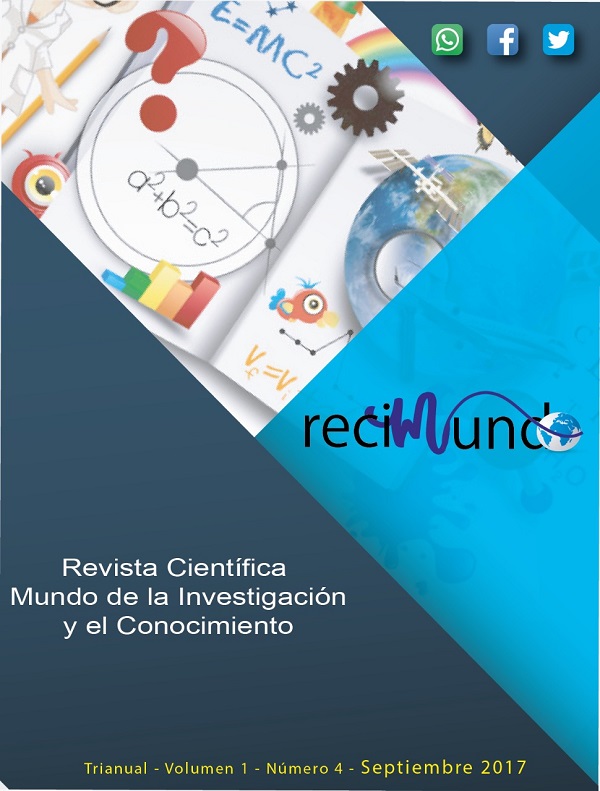Teachers´ attitudes towards using technology vs. analysis based on Ecuadorian curriculum standards
DOI:
https://doi.org/10.26820/recimundo/1.4.2017.564-576Keywords:
Using technology, analysis based, curriculum standardsAbstract
Technology has become a fundamental aspect in education; it has waved into the educational world and graciously improved several of its areas. technology has become a powerful tool that can make the learning process fascinating, provocative and most of the time enjoyable; it has helped teachers improved their practice in and outside the classroom, the many benefits technology can offer are countless; however, not everything in life is perfect, sometimes technology becomes an obstacle for teachers and it all comes down to their attitude towards using it.Downloads
References
Augoustinos, M., Walker, I., & Donaghue, N. (1995). Social Cognition: An Integrated Introduction. Washinton DC: SAGE.
Becker, H., & Anderson, R. (2001). School Investments in Instructional Technology: Report no. 8 of the Teaching, Learning, and Computing Project. Irvine: Center for Research on Information Technology and Organizations. Irvine: University of California.
Collins, A., & Halverson, R. (2009). Rethinking education in the age of technology: The digital revolution and schooling in America. New York: Teachers College Press.
Dynarski, S., Loeb, S., McFarland, D., & Morris, P. (2017). Descriptive analysis in education: A guide for researchers. Washington: National Center for Education Evaluation and Regional Assistance.
Feltovich, P., Spiro, R., & Coulson, R. (1997). Issues of expert flexibility in contexts characterized by complexity and change. En P. Feltovich, & K. Ford, Expertise in context: Human and machine (págs. 125-146). Menlo Park: CA: AAAI/MIT Press.
Fullan, M. (2000). The meaning of educational change: A quarter of a century of learning. En A. Hargreaves, A. Liberman, & M. Fullan, International handbook of educational change. Queensland: Kluwer Academic Publishers.
Hattie, J. (2013). Understanding Learning: Lessons for learning, teaching and researc. Melbourne: University of Melbourne.
Jackson, B. (2013). Teachers' Preparation Needs for Integrating Technology in the Classroom. Washington D. C.: UMI Dissertation.
Krishna Arya, H. (2015). “Teachers will not be replaced by technology, but teachers who do not use technology will be replaced by those who do.”. Innovative Educators – News Radar.
Lickona, T., Schaps, E., & Lewis, C. (2007). CEP’s eleven principles for effective character education. Washington: Character Education Partnership.
Marcinek, A. (2014). Badanie "Spoleczna adpoeiwdzialnose organizacji pozarzadowych". Esrprofit.
Moscovici, S. (1988). Psicología Social II. Barcelona: Editorial Paidós.
Resnick, L. (1989). Currículum y congnición. Buenos Aires: Aique Grupo Editor.
Resnick, L. (1991). Perspectives on Socially Shared Cognition. Washington: American Psychological Association.
Roach, A., Beddow, P., Kurz, A., Kettler, R., & Elliott, S. (2010). Incorporating student input in developing alternate assessments based on modified achievement standards. Exceptional Children, 77(1), 61-80.
Soltis, J. (1981). Afterthoughts. Educational Thfory, 31(1), 91-101.
Turner, J., & Tajfel, H. (1986). The social identity theory of intergroup behavior. Psychology of intergroup relations, 7-24.
Zimmerman, J. (2006). Factors that relate to educators’ use of the Baldrige Framework. Continuous Improvement Monitor, 2(3).



